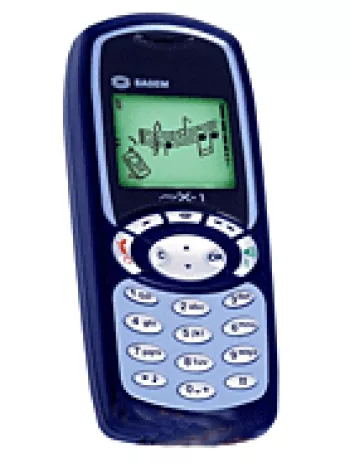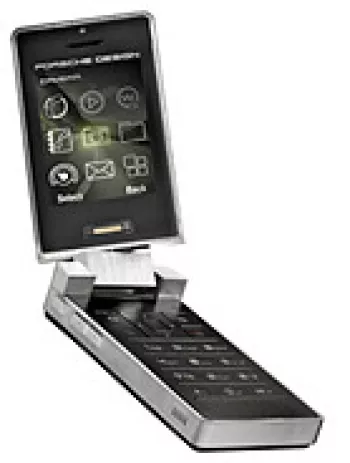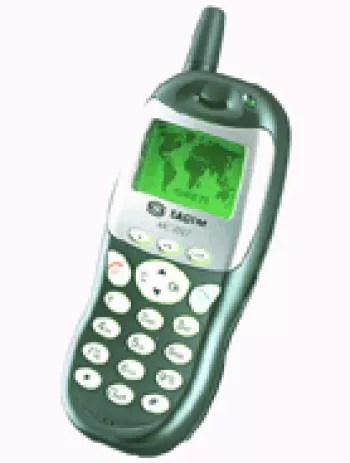
Overview of the Sagem MC 820
The Sagem MC 820, introduced in 1998, was a feature phone that marked a period of transition in mobile technology during the late 1990s. It represents a time when phones were primarily used for voice communication and basic messaging, just before the smartphone revolution that would take place in the following decade. With its classic design and essential functionalities, the MC 820 appeals to technology enthusiasts who appreciate the simplicity and reliability of early mobile phones.
Network and Connectivity
The Sagem MC 820 operated on the GSM network, which was the standard cellular technology of its time. Supporting GSM 900 and 1800 bands, the device was well-suited for use in many regions across the globe that adopted these frequencies. However, unlike later models, the MC 820 did not support GPRS or EDGE technologies, as the focus then was more on the robustness of voice calls than on data services. It was grounded in delivering solid voice performance without the frills of internet-based applications.
Launch and Discontinuation
Announced in 1998, the Sagem MC 820 quickly grabbed the attention of consumers seeking efficient and straightforward communication devices. However, with the rapid advancement in mobile technology, it was soon discontinued as smartphones began to take center stage. Despite its relatively short lifespan, the MC 820 remains a noteworthy model for highlighting the evolution of mobile phone technology during a pivotal era.
Body and Design
Physically, the Sagem MC 820 had dimensions of 130 x 50 x 26 mm, making it quite larger compared to the slim designs of today's devices. Weighing 135 g, the phone was considered lightweight for its era. It featured a classic black, rectangular body with an alphanumeric keypad, a defining characteristic of phones from the 1990s. The phone used a Mini-SIM card, which was standard at the time, contrasting greatly with today’s trend towards micro and nano-SIMs.
Display
The MC 820’s display was strictly utilitarian. It had an alphanumeric screen which could show 3 lines of 12 characters. In an era when color displays were not the norm, the monochrome screen allowed users to view their messages and phone numbers with clarity. This simple display underscored the phone’s focus on functionality over aesthetics.
Memory
Memory-wise, the Sagem MC 820 was straightforward. It did not have a card slot for expandable memory, relying solely on its internal capacity to store up to 100 phonebook entries. This mirrored the user priorities of that time, which centered more on storing essential contact numbers rather than multimedia files or applications.
Sound
The device included basic sound features, with a loudspeaker for hands-free calling, and could alert users through vibration and monophonic ringtones. There was no 3.5mm jack, underscoring its primary design as a communication tool rather than a multimedia device.
Communications and Messaging
Connectivity options were basic yet efficient, consisting of SMS capabilities for messaging. The lack of internet browser capabilities highlighted the phone's role as a utilitarian tool for voice and text communication. Without modern services such as WLAN or Bluetooth, the MC 820 offered users a straightforward and uninterrupted means of staying connected.
Battery Life
The phone was powered by a removable NiMH battery, a common choice for devices of that time. Users could expect up to 90 hours on standby and approximately 3 hours of talk time. This battery performance was considered decent, ensuring that users could reliably plan around a day's worth of normal use without frequent charging.
Miscellaneous Features
Apart from its primary communication functionalities, the MC 820 included essential utilities like a clock and an alarm function. Designed with utility in mind, the phone did not support games or Java, focusing on delivering core performance for everyday tasks. The available color options, though limited, kept the focus more on functionality and reliability.
Cultural Impact and Legacy
While it might be seen as antiquated by today's standards, the Sagem MC 820 exemplifies the transition phase of mobile communication. Its straightforward design and features serve as a reminder of an era when phones were simpler, focusing on robust, reliable performance. Although specific usage and consumer culture have drastically evolved, devices like the MC 820 paved the way for future innovations and are essential in appreciating the development arc in mobile technology.
Conclusion
The Sagem MC 820, while discontinued, remains a significant landmark in the history of mobile phones. It reflects a period where the industry was building the foundations for the modern mobile communication devices we use today. Appreciated for its simplicity and utility, it represents a nostalgic time in technological progression where function was tantamount to form. The MC 820 reminds us how far technology has come and how those foundational designs continue to influence modern-day advancements.
Key Features of Sagem MC 820
- GSM Technology: Supports GSM 900 / 1800 bands
- Compact Dimensions: 130 x 50 x 26 mm
- Lightweight: Weighs 135 grams
- Mini-SIM compatibility
- Alphanumeric Display: Supports 3 x 12 characters
- Phonebook capacity: Stores up to 100 contacts
- Vibration and Monophonic ringtones
- Loudspeaker available
- Basic SMS Messaging
- Includes Clock and Alarm functionality
- Removable NiMH Battery
- Battery Life: Stand-by up to 90 hours, Talk time up to 3 hours
Disadvantages of Sagem MC 820
- Outdated technology, announced in 1998 and now discontinued.
- Lacks GPRS and EDGE, meaning no data services over the 2G network.
- No camera feature is available.
- Minimal display capabilities with a 3 x 12 character alphanumeric screen.
- No card slot for expandable memory; limited phonebook capacity of only 100 entries.
- No speakerphone functionality and lacks a 3.5mm headphone jack.
- Limited communication features: no WLAN, Bluetooth, GPS, radio, or USB connectivity.
- No multimedia capabilities, as the device cannot access a web browser and does not support Java.
- Only allows for basic SMS messaging; no MMS or email functionality.
- Very limited battery life with only 90 hours standby and 3 hours talk time.
- No games or entertainment features available on the device.
View Also
More Phones
All Rights Reserved +13916 Phones © Mobilawy 2025

























